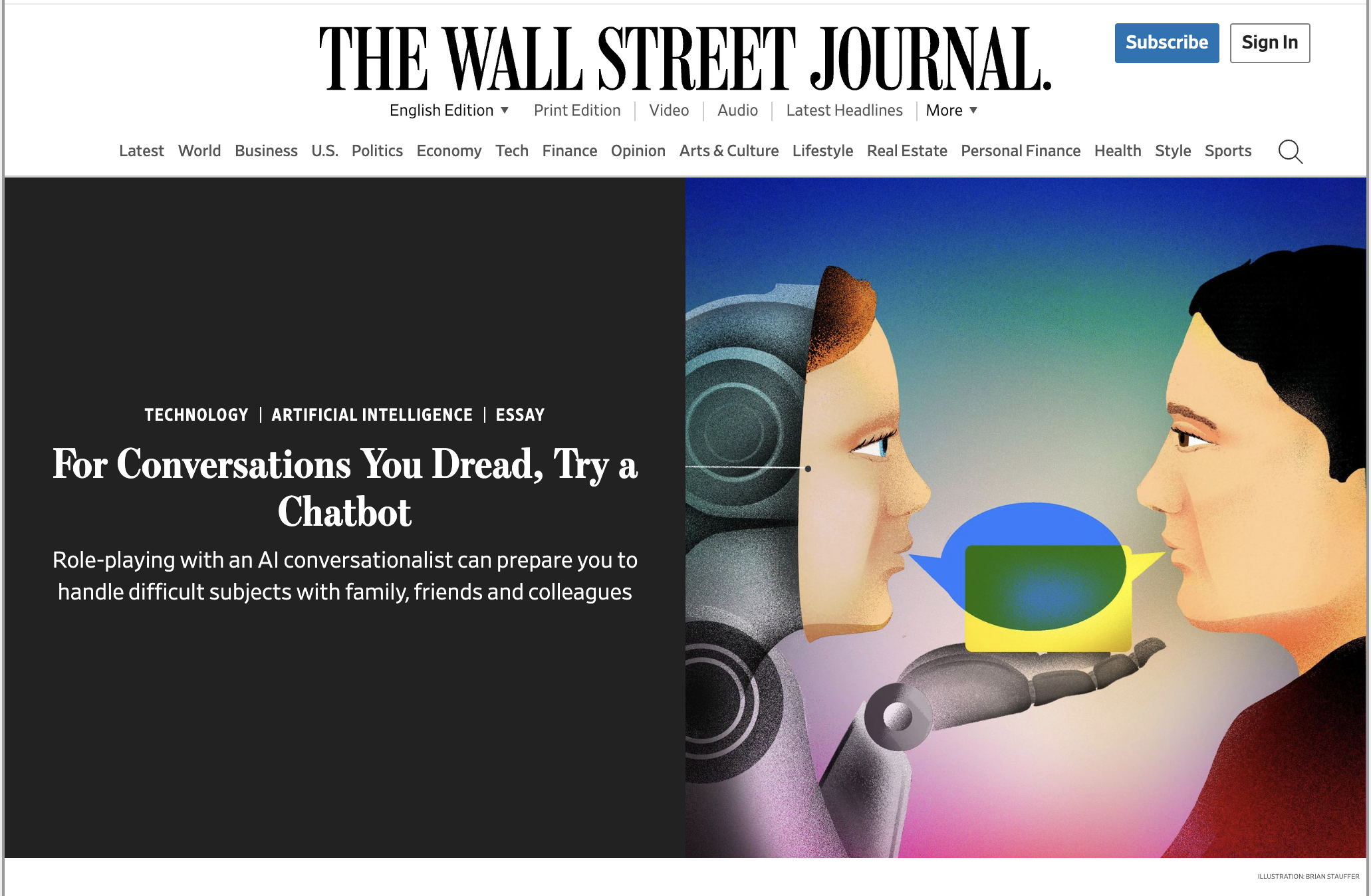Innovation Doesn't Have to be Hard (I Just Watched AI Turn Torture Into Play)
I was leading a workshop this week with 30+ world-class design leaders when something stopped me cold. We were working through a particularly gnarly challenge—the kind that usually has teams staring at whiteboards for hours, wrestling with messy qualitative data and trying to infer human meaning from ethnographic studies.
But this time felt different. Every time I noticed that familiar moment where teams hit cognitive quicksand—where I'd normally say "this is the hard part, push through it"—something clicked. This is exactly when AI should step in.
What happened next fundamentally changed how I think about innovation capacity.
The Accepted Suffering
For 15 years, I've taught thousands of innovators to push through predictable cognitive bottlenecks:
Abductive reasoning: Making sense of messy human insights and inferring deeper meanings
Radical ideation: Generating truly diverse, unexpected solutions (not just obvious variations)
Experiment design: Crafting scrappy tests when you're staring at a blank page
Strategic navigation: Deciding "what's next" when you've learned a dozen conflicting things
We've normalized these as "the hard parts" of innovation. Teams budget extra time for them. Leaders expect frustration. We've built entire methodologies around managing this cognitive friction.
But what if that's completely wrong? What if we've been accepting artificial limitations?
The Discovery Moment
Watching these teams work, I started noticing a pattern. Every time someone said "I just need a few minutes to think quietly" or "This feels much harder than it should be"—those weren't signs to push harder. They were signals to invite AI in.
Moment 1: Abductive Reasoning A team was stuck interpreting user interview data, trying to identify underlying emotional drivers. Instead of the usual 45-minute struggle, we fed the raw transcripts to AI and asked it to surface patterns of unspoken needs. In 3 minutes, we had insights that would typically take hours to tease out.
Moment 2: Radical Ideation Another group was generating solutions but kept circling back to obvious approaches. Rather than the standard "think more creatively" coaching, we used AI as a tireless brainstorm partner, pushing for increasingly unexpected angles. The cognitive load of generating truly diverse ideas vanished.
Moment 3: Experiment Design A team needed to test a complex service concept but was paralyzed by where to start. AI helped them craft three scrappy experiments in minutes—complete with success metrics and potential failure points.
The pattern was undeniable: AI had turned the cognitively hardest parts of design thinking into feats of wonder.
The Cognitive Amplification Map
What I witnessed wasn't just productivity improvement—it was cognitive amplification at the exact points where human thinking hits natural limits:
Abductive reasoning → AI as cognitive amplifier for pattern recognition
Diverse ideation → AI as tireless brainstorm partner with infinite perspectives
Experiment design → AI as starting point generator, not blank page tormentor
Strategic decisions → AI as innovation co-pilot fluent in any methodology
Ironically, these natural limits are now arbitrarily accepted in the age of AI. Natural limits are now artificial.
Let me be clear, though: this isn't about AI doing the work for you. It’s about recognizing where AI can help you achieve an objective without the usual hand wringing. Sometimes the most powerful application is getting AI to push your brain to go further.
For the ideation exercise, as a professor in the workshop setting, I didn't want AI generating ideas for the teams—I wanted it to provoke better thinking from the humans. So I deployed a Socratic-style AI brainstorming tutor, trained to ask increasingly provocative questions that pushed participants to think more broadly themselves. The result? Teams generated more diverse, unexpected solutions than I've seen in years of facilitation.
This is the beauty of AI as a cognitive amplifier: it adapts to how you want to think, whether that's generating options, providing starting points, or simply asking the right questions to unlock your own creativity.
This isn't about AI doing the work—it's about AI eliminating the artificial friction that slows human thinking. Teams can now focus their energy on judgment, refinement, and implementation rather than wrestling with cognitive quicksand.
The Fundamental Choice
This workshop revelation connects to something NVIDIA's Jensen Huang said recently that stopped me in my tracks:
"The real question is, are you a hopeful person, an optimistic person who believes in idea creation, or are you somebody who believes there are no new ideas left and quite frankly we're just working?"
He continued: "If you look at Nvidia, we have so many ideas, we don't have enough time or people to go do it. The backlog of great ideas that we would love to go try... is incredible."
This is the fundamental choice every leader faces: Are you scaling efficiency or scaling imagination?
If you're thinking in terms of productivity alone—doing the same work with fewer people—then AI feels threatening. But if you're thinking in terms of exponential possibility—pursuing ideas you never had the capacity to explore—then AI becomes your greatest ally.
The Challenge
Most organizations are approaching AI from the efficiency mindset: "How can we do our current work faster?" That's productivity thinking—and it will indeed lead to needing fewer people.
But what if you flipped the question: "What ideas have we never had the capacity to pursue?"
The workshop taught me that innovation isn't naturally hard—we've just been operating with artificial cognitive constraints. AI doesn't just make innovation faster; it makes it infinitely scalable.
The question isn't whether your job will change. It's whether you'll be the one expanding into new possibilities or watching others do it.
Find Your Own Cognitive Quicksand
Here's what I realized watching those teams: the methodology I used in the workshop is completely replicable. You can identify the most cognitively demanding aspects of your own work and explore whether AI might transform them from energy drains into sources of excitement.
Think about it: if 60% of your mental bandwidth is consumed wrestling with cognitive bottlenecks, you have no capacity left to imagine bigger opportunities. But what if you could flip that equation?
Your Step 0: The Cognitive Audit
Track your energy drains: For the next week, notice when you think "this is harder than it should be" or "I just need some quiet time to think through this"
Identify the pattern: What type of cognitive work consistently feels like pushing through mud?
Test the transformation: Pick your biggest bottleneck and explore whether AI can turn it from torture into play
I've watched this pattern repeat dozens of times now: the executive who dreaded strategic planning sessions until AI became her thinking partner. The product manager who used to burn weekends on user research synthesis until AI turned it into a 30-minute exercise. The startup founder who went from paralysis to excitement about market research.
The magic isn't just efficiency—it's the cognitive bandwidth you suddenly have to pursue ideas you never had the capacity to explore.
When your biggest energy drains become effortless, you don't just get your time back. You get your imagination back.
Your Laboratory
Ready to experience this cognitive amplification yourself? I've built four GPTs that demonstrate exactly what I witnessed in the workshop:
[Design Thinking Insight Generator]: For abductive reasoning - feed it messy data, get clear human insights
[Design Thinking Brainstorm Partner]: For radical ideation - your Socratic brainstorm partner that pushes you to think broader
[Design Thinking Prototyping Sidekick]: For experiment design - turn uncertainty into testable hypotheses
[Design Thinking Innovation Co-Pilot]: For strategic navigation - synthesize learnings into next steps
Don't just read about this transformation—experience it. Pick one cognitive bottleneck you're facing right now and run it through the relevant GPT. If you’re not sure where to start, check with the Design Thinking Innovation Co-Pilot.
Notice how it feels when the hardest part becomes the easiest part. (Note, to fully appreciate the augmentation, you have to know how painful each of these cognitive demands are to our “unwired” brains.)
Then ask yourself: If this level of cognitive amplification is now possible, what ideas are you ready to pursue that you never had the capacity for before?
The innovation revolution isn't coming—it's here. The only question is whether you're scaling efficiency or scaling imagination.
Related: Train Your Imagination
Related: Stop Fighting AI Glazing
Related: Beyond the Prompt: How A Chief Creative Officer Crafts the Perfect Pitch
Join over 24,147 creators & leaders who read Methods of the Masters each week



Last week, I ran an innovation workshop for the thousandth time. But this time felt different. Every time I noticed that familiar moment where teams hit cognitive quicksand—where I'd normally say "this is the hard part, push through it"—something clicked. This is exactly when AI should step in.